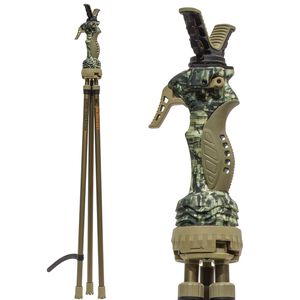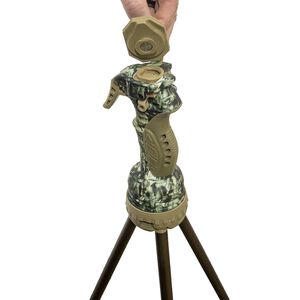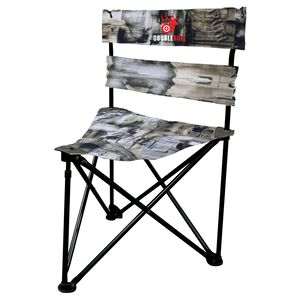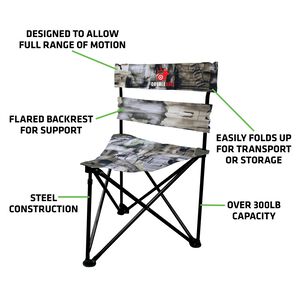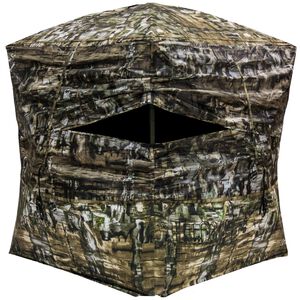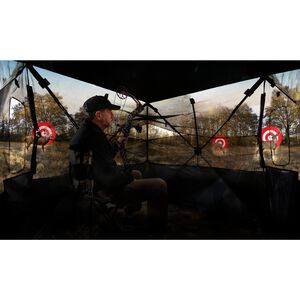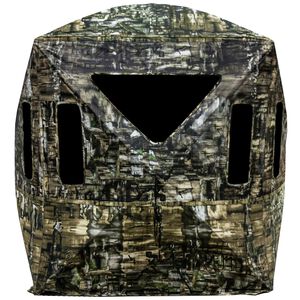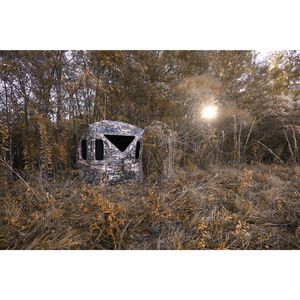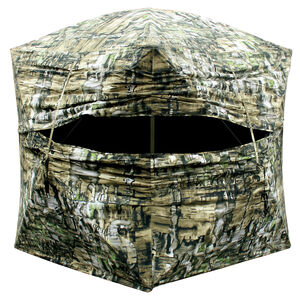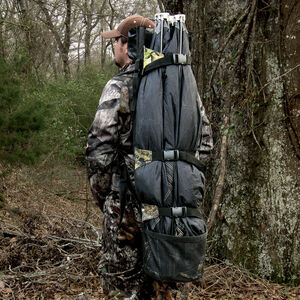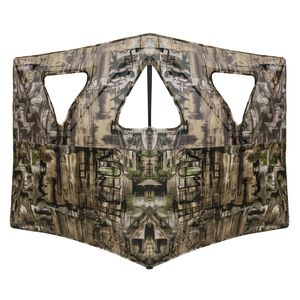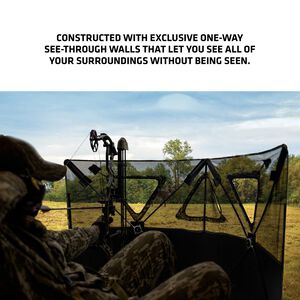When you begin hunting, you learn pretty quick that you will always be learning when it comes to the sport we love. Whether you are choosing which type of stand to use, where to place that stand, when is the best time to hunt that stand, when or how to call deer, the learning never ends. There are a lot of ways to hunt deer, but when done properly, hunting from a ground blind can be one of the easiest, comfortable, and most effective ways to hunt. If you are looking to get started, improve your tactics or learn something new about ground blind hunting then you are in the right spot. We will give you the tips and information you need to be successful while hunting from a ground blind.
Hide
Oftentimes you hear the term “hang and hunt”, this essentially means you find a spot or an area that has deer
utilizing it, once you find a desired area you hang your stand and hunt it the same day. This is a very
effective
way to hunt in a lock-on deer stand, but you can also use this tactic with ground blinds. When you take the
approach
of hunting the same day, you need to focus on the hide just as much, if not more than the location.
One of the largest parts of hunting from the ground in a blind is not surprising deer. If you plan to hunt the
same
day you set the blind up, you need to blend it in with the surroundings, also known as brushing the blind.
Finding a
grown up ditch, a tree line, or a blown down tree is a great way to add a backdrop to your setup. Then,
utilizing
brush and branches, pile them all around the front, sides, and top of your ground blind, making it disappear!
The
goal is to remove the “box” shape of the blind, making it blend in smoothly with no hard edges is the trick. Pay
close attention to the roofline and be sure to brush the top as much as you brush the front and sides. As silly
as
this sounds, hiding your hide is a big part of staying concealed throughout the hunt. Using a SurroundView blind
is
a great way to keep your shooting lanes open but keep yourself hidden.
Don't Hide
If you plan to leave blind there for a while, say in the middle of a field, that’s okay too. The idea here is
you
want the deer to become used to the blind in the field. It needs to become a part of that field just as much as
the
irrigation pivot or old box stand in the tree line. You can use the normality of the blinds location to your
advantage, having a set & safe route in and out of your blind is crucial. Do your best and be disciplined about
hunting the right wind, as well as entering and exiting the blind without deer knowing you are there.
When it comes to locations, you don't necessarily hunt where they are, but where they are going to be, especially when rifle hunting. However, if you want to be successful, you have to be selective. When selecting a spot to put your ground blind, you want to narrow down the deer’s option of routes. Setting up on the field edge is always a good method to see a large amount of deer, but setting up in a break in terrain or funnel like a turn row, culvert or cypress slough narrows down the options for travel that a deer has. The same method goes for hunting woods, our opinion at Primos on hunting woods in ground blinds mainly relies on geographic features. Using draws, natural funnels, creeks, and hardwood bottoms can quickly narrow down a deer’s route to their bedding or feeding area. Walk the area you are hunting and find the most concentrated pinch point with deer traffic and set a game camera up to confirm your location. If you already have a deer in mind that you want to hunt, try to locate his bedding area and his main source of food, finding these travel corridors is key. Once you have located it, study it with topographic maps or boots on the ground to find a natural pinch point to set your blind in.
A quality ground blind like Double Bull blinds, will naturally suppress many of the sounds a hunter tends to make while hunting. But there are still some things you need to be aware off such as shuffling feet or scraping the side of the blind. Two things to combat this are a good swiveling blind chair and a clean ground underneath you. Spend a little time getting dry leaves and sticks out from under the ground blind. Getting rid of anything that can cause noise when you are preparing to take the shot can make or break a hunt.
As discussed earlier, concealment is vital. Concealment can be accomplished by brushing your blind or utilizing the new technology of see through walls like that on the new Primos Surround View Blind. However, being still is one of the most important aspects of ground blind hunting. Being comfortable is one of the best ways to remain still, and a good ground blind chair and a shooting stick will help you stay quiet, still, and comfortable all the way from getting in the blind to squeezing the trigger.
Ground blinds do a very good job of concealing human scent, but no ground blind is perfect. Be sure to practice your standard scent control practices and the ground blind will do the rest. You can cheat the wind from time to time, but never doubt the power of a mature buck’s nose.
Ground Accessories
After you’ve taken all the steps above, be prepared when the opportunity for a shot presents itself. If you are
hunting with a gun the best way to avoid a free hand shot is using a TriggerStick. A bipod is great for saving space
when hunting with a buddy, but a tripod TriggerStick is a great way to have a rock solid foundation from your blind
chair. If you’re hunting with a bow, be aware of your chair height. You want to be sure that your arrow clears the
window you are shooting out of. Lastly, move slow, take your time, most likely the deer has no idea you are there.
Take a clean and effective shot.
